Flat, bright, bassy, v-shaped — we’ve heard them all before, but which sound signature should you go for?
When it comes to choosing headphones, some features can objectively tell you how well they’ll sound.
For example, you can check its frequency response rate, which should ideally be at least 20 Hz – 20 kHz. You can also check what Bluetooth codecs it implements to know how accurately it compresses and transmits audio data. And, you can even check its signal-to-noise ratio (SNR), which should land in the 60-100 dB range for clearer sound quality.
Another feature to consider in headphones is their sound signature.
Sound signatures represent how your headphones add a unique color to your music. However, they’re also tricky to navigate because they’re entirely subjective.
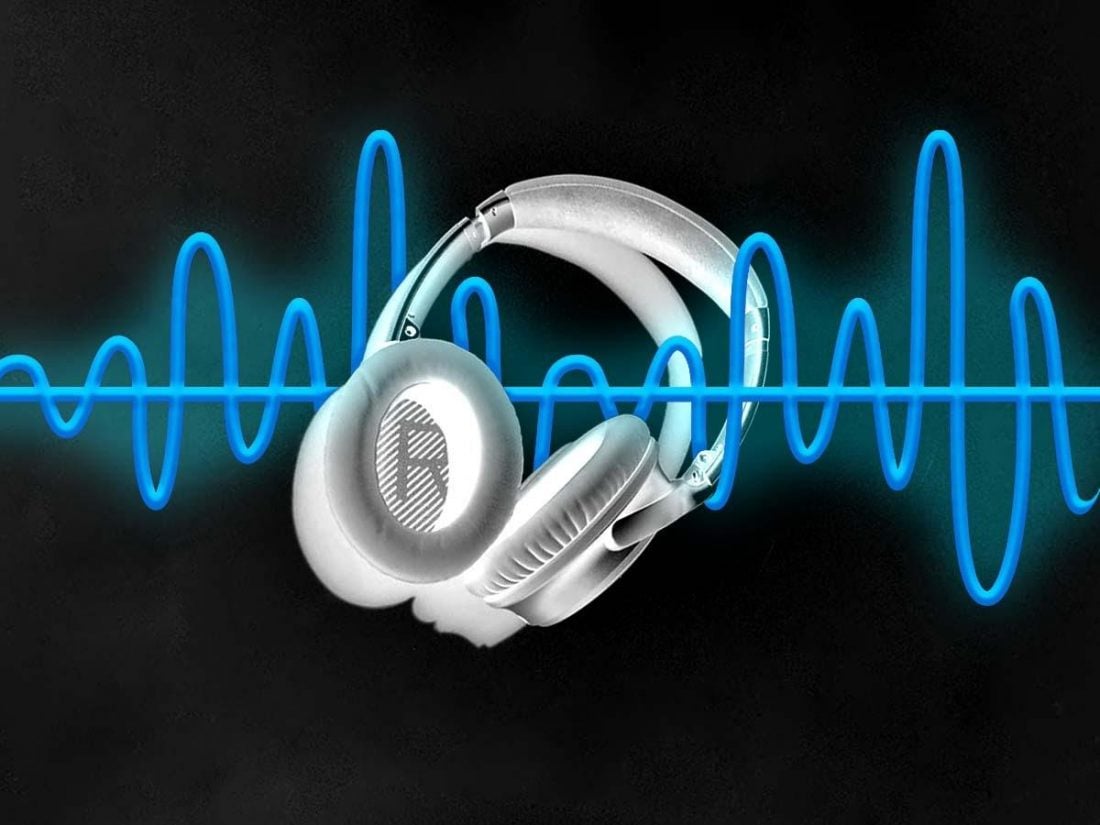
If you aren’t at least somewhat well-versed in the fundamental differences, it makes it that much harder to narrow down your options and find your ideal-sounding headphones. And that’s a big deal considering there are thousands and thousands of choices out there.
But not to worry – we’ve created an easy-to-digest guide to sound signatures that will hopefully have all your questions answered. So let’s get to it!
What Is a Sound Signature?
A sound signature refers to the characteristics of a device’s sound. In headphones, it refers to how the drivers are tuned to amplify or reduce specific frequencies. So, for instance, some headphones will have more pronounced bass, while others might have enhanced mid-range frequencies.
Many headphone brands are known for having specific sound signatures. Audio Technica, for example, is generally known for its balanced sound. Other brands will have several different headphone models with different sound signatures. For instance, Beyerdynamic offers a range of headphones with neutral, bright, v-shaped, and analytical sound signatures.
Having headphones with different sound signatures appeals to a broader listener market because specific sound signatures are more suited for certain types of music.
Why is it important to understand sound signatures?
If you’re unfamiliar with sound signatures, it’s likely not going to be at the forefront of your mind when buying headphones.
As such, it becomes all too easy to write off a pair of “bad-sounding” headphones to poor manufacturing and call it a day. When in fact, it’s usually just the sound profile that isn’t good, not the device. That’s why it’s essential to understand the distinctive ‘color’ of each sound signature to get the best listening experience.
But before you can fully grasp sound signatures, it’s equally important to understand how sound frequencies work.
How Sound Frequencies Work
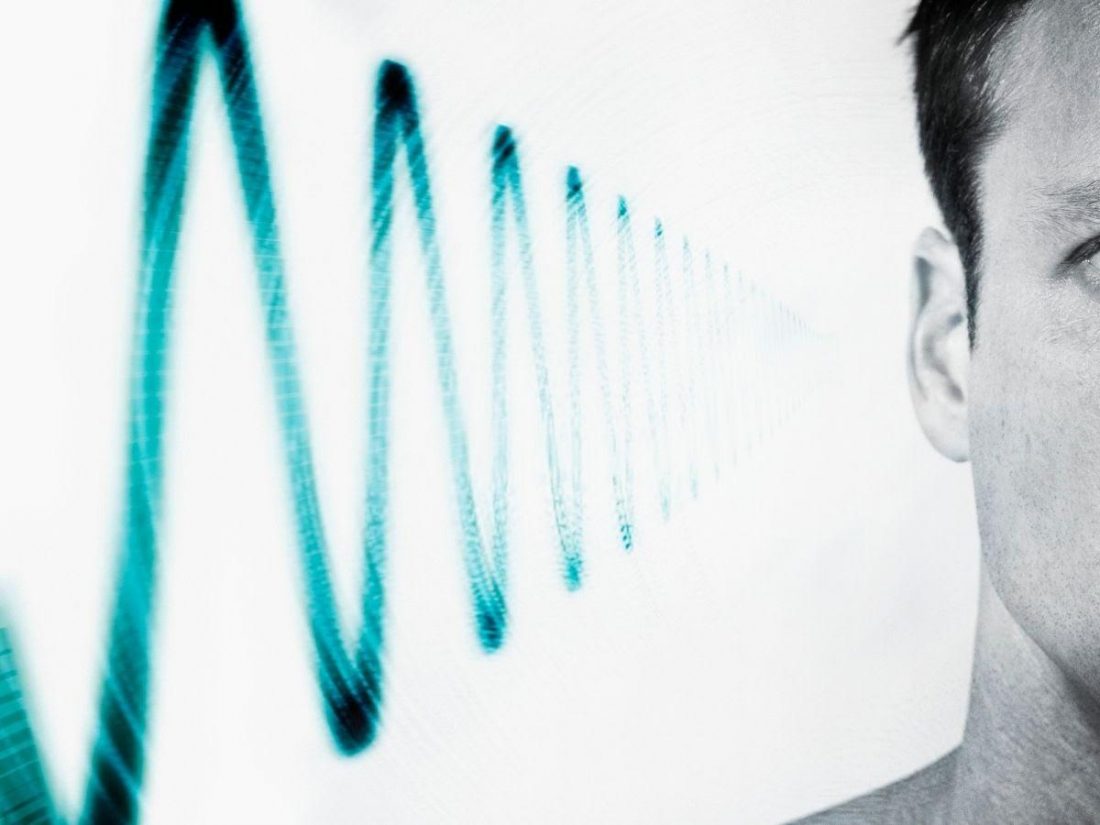
When a sound is produced, it compresses air molecules around us and causes them to vibrate. These vibrations create a chain reaction of waves that allows sound to travel through the air — thus, creating what we know as ‘soundwaves.’
Once the sound wave reaches our ears, our complex auditory system analyzes them using its five characteristics: amplitude, time period, velocity, wavelength, and frequency.
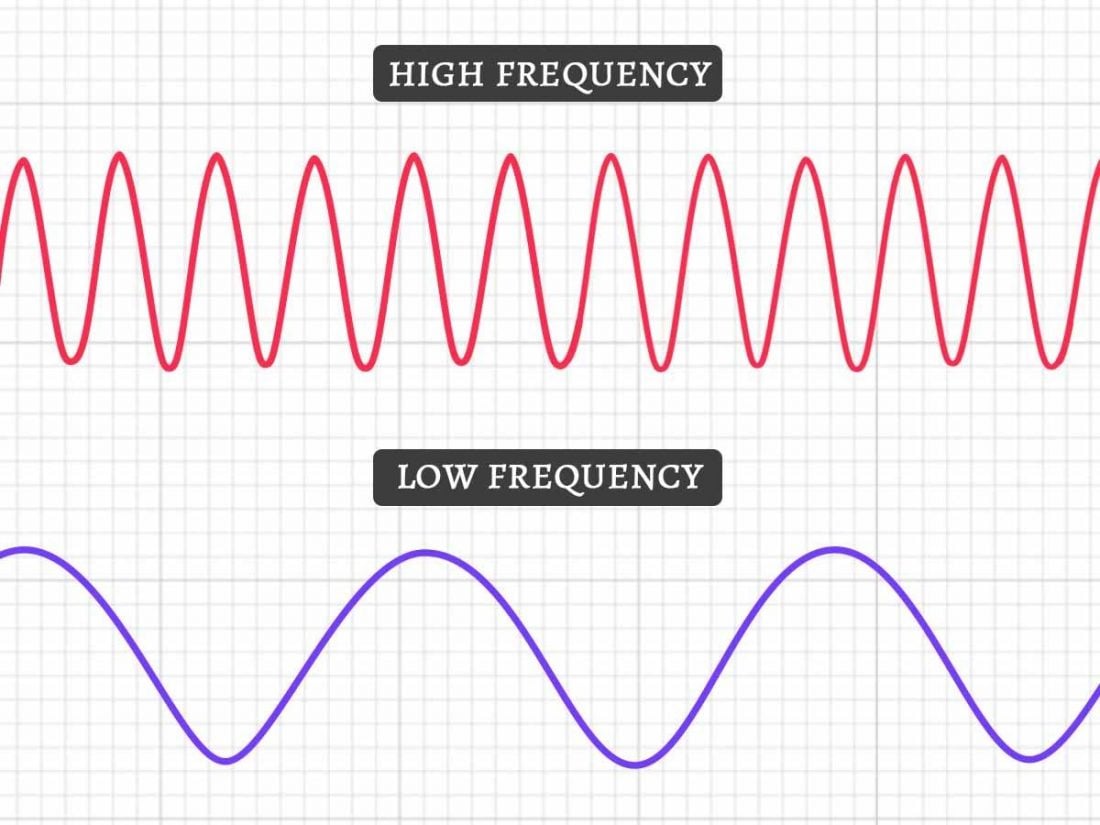
Sound wave frequencies are measured in hertz, which is determined by the number of waves generated in a second. For example, if a sound produces 20 soundwaves per second, its frequency is 20 hertz (Hz).
Younger people with relatively healthy ears can hear frequencies ranging from 20 Hz to 20 kHz. These frequencies can be categorized into three general types:
- Bass (20-250 Hz): Also called “Lows,” this represents the lowest frequencies on the audio spectrum. On a music track, bass adds power, ambiance, and depth.
- Mids (250-2 kHz): This refers to the mid-range frequencies, often occupied by vocals and instruments. Essentially, the bulk of what you hear on a music track will be within this range.
- Treble (2 kHz-20 kHz): Also referred to as “Highs,” this represents the higher frequency sounds. These typically include instruments like cymbals, flutes, piccolos, which add clarity and detail to a music track.
Do headphones with a broader frequency range sound better?
Some headphones have a wider frequency range, going from 10 Hz up to 32 or 40 kHz. Does this mean they sound better? Not necessarily.
First of all, the human ear can’t hear frequencies outside the 20 Hz to 20 kHz range. Instead, you’re more likely to feel frequencies lower than 20 Hz. If you’ve ever stood in front of a booming speaker, you’ll know what we mean. So, while frequencies this low could probably add some immersive quality to your music, generally speaking, you won’t be able to hear it.
Secondly, there’s no guarantee that there won’t be some variability in frequency response when it comes to headphones with a wide frequency range.
For instance, a pair of headphones may experience a dip or rise in dB in response to specific frequencies, and this can dampen the sound of your music. So, in theory, these headphones can reproduce sounds within that broader frequency range, but not as accurately.
So, why do manufacturers continue to make headphones with frequency ranges that go beyond what we can hear? Well, doing this ensures that the frequencies that matter, particularly the outer limit frequencies, sound impeccable.
If the frequency output dropped off immediately outside of the 20 Hz to 20 kHz range, there would be a very audible degradation in sound quality. Thus, having a wider frequency range makes that degradation less apparent because it occurs on frequencies we can no longer hear. But, that is a luxury that people with untrained ears may not notice as much.
Types of Sound Signatures
Headphones come with one of eight commonly known sound signatures. Here’s what each of them sounds like:
Flat/Neutral
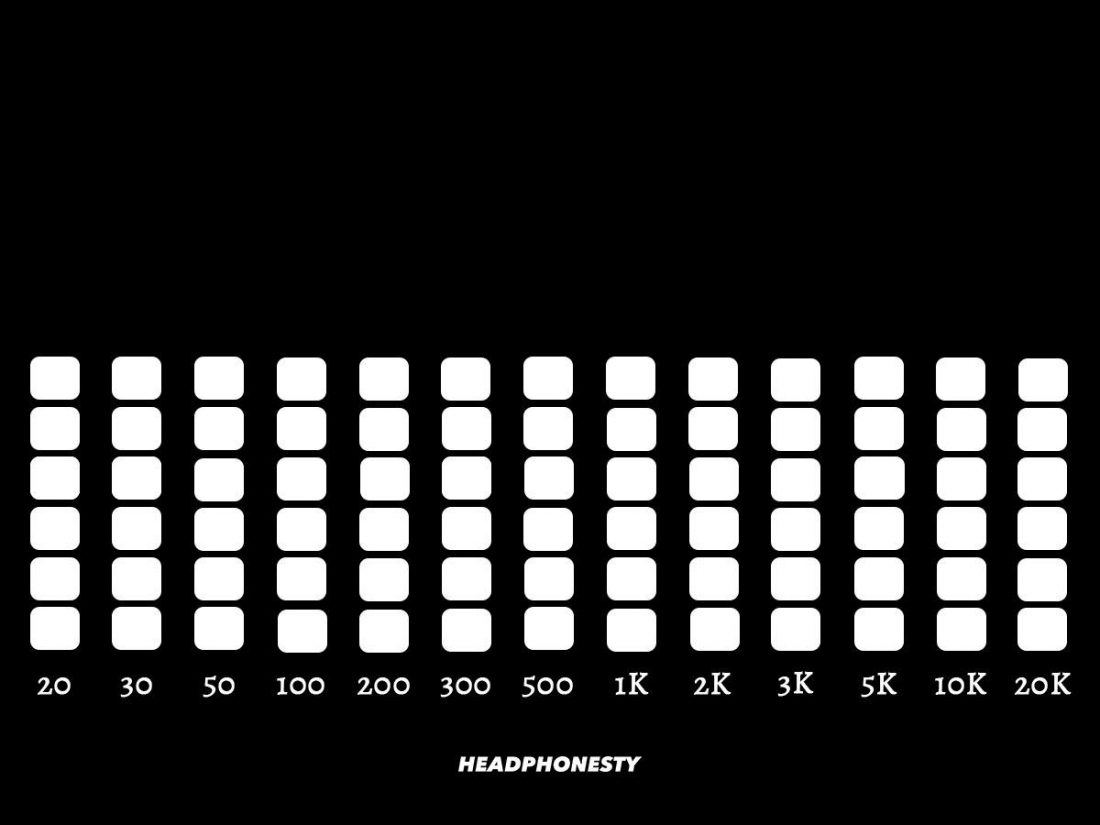
A Flat or Neutral sound signature, like the name suggests, has equal values for all frequencies across the board. As a result, it’s the most natural-sounding signature and provides the closest reproduction of how a track was originally recorded. Due to their accurate sound reproduction, Neutral headphones are often used in professional studios for mixing and mastering music tracks.
Best for: Music professionals, sound engineers, Hi-Fi enthusiasts, and audiophiles.
Best genres: Classical, Jazz, Blues, Rock, Folk.
Audio gear to check out: Sennheiser HD 600, Hifiman Sundara, Etymotic ER4SR Earphones.
Bright
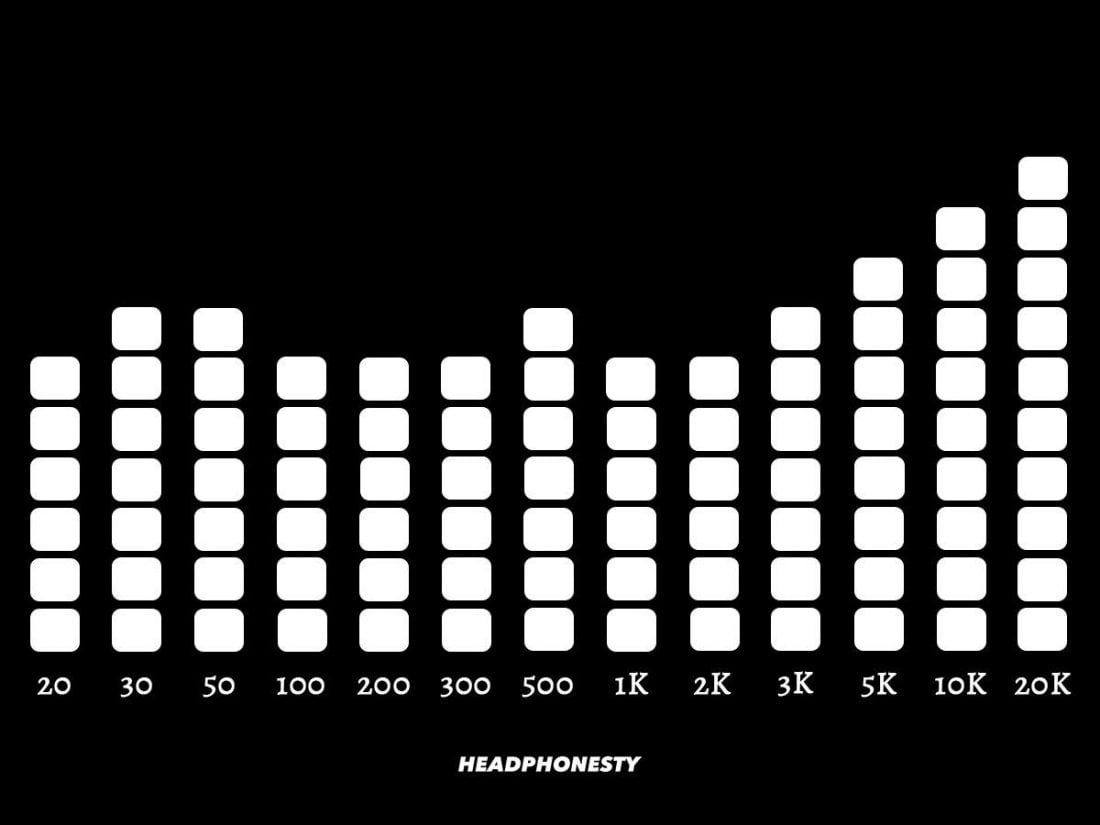
A Bright sound signature has boosted high and upper-mid frequencies, which gives your music a thin, sharp, and detailed quality. Music professionals also tend to favor this type of sound signature for mixing and mastering because the level of clarity it provides reveals all the audio imperfections on a track. This makes it easier for them to make corrections and adjustments.
Best for: Music professionals, sound engineers, audiophiles, and general music enthusiasts who enjoy picking music tracks apart.
Best genres: Classical, Rock, and Jazz.
Audio gear to check out: AKG K701, GRADO SR80x, Beyerdynamic DT 770.
Balanced
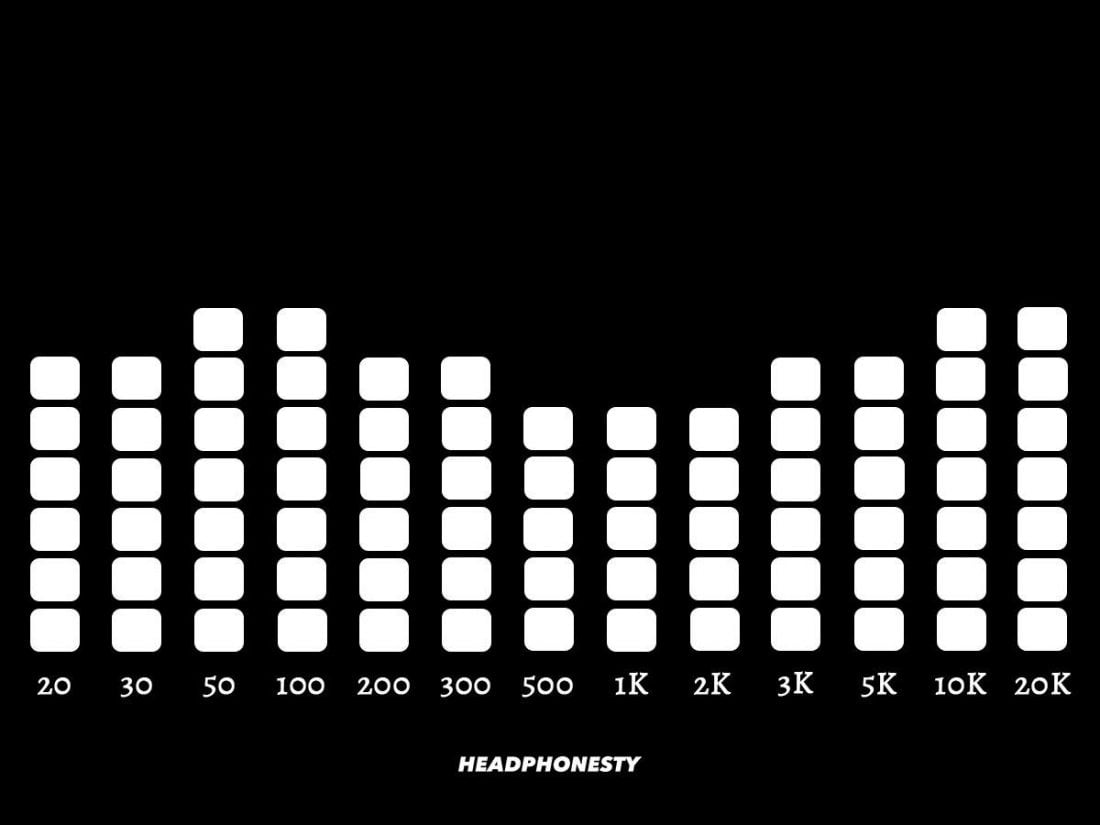
A Balanced sound signature has slightly increased bass and treble frequencies. It’s very similar to the Flat sound signature, so the two are often lumped together. However, unlike the more tinny sound of a Flat profile, Balanced headphones have a bit more warmth and depth. The increased bass and treble also make this profile sound more lively, making them ideal for a wide range of musical genres.
Best for: Most music listeners who like switching between a variety of music genres.
Best genres: Classical, Jazz, Blues, Rock, Folk, Pop.
Audio gear to check out: HIFIMAN HE-400I, Klipsch Reference Over-Ear Headphones, Sennheiser IE 300.
Extra Bass
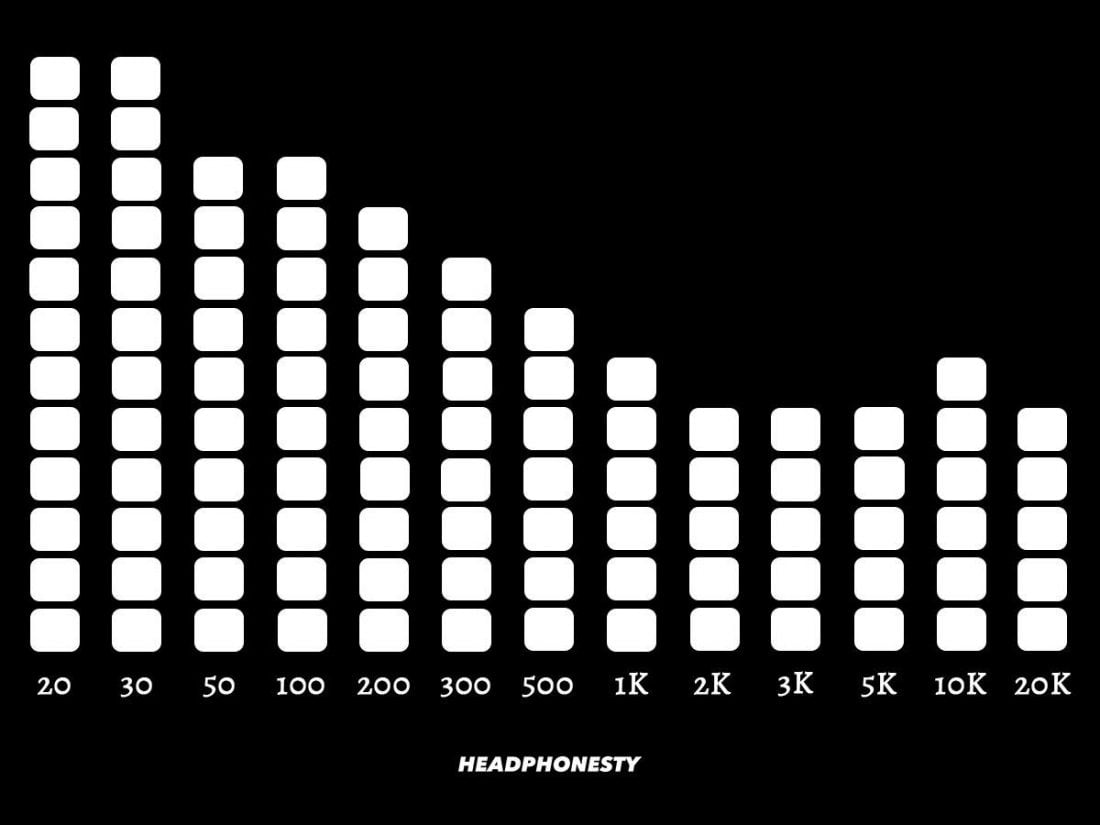
The Extra Bass sound signature has very pronounced lower frequencies, giving music tracks that punchy, booming quality fit for the clubs. Too much bass, however, can sacrifice the clarity of higher frequencies and reduce the overall quality of your music.
Best for: Bassheads who like their music with a lot of extra depth and “oomph.”
Best genres: Electronica, HipHop, EDM, some R&B.
Audio gear to check out: Beats Studio 3 Wireless, Sony WH-XB900N, V-MODA BassFit Wireless.
V-Shaped
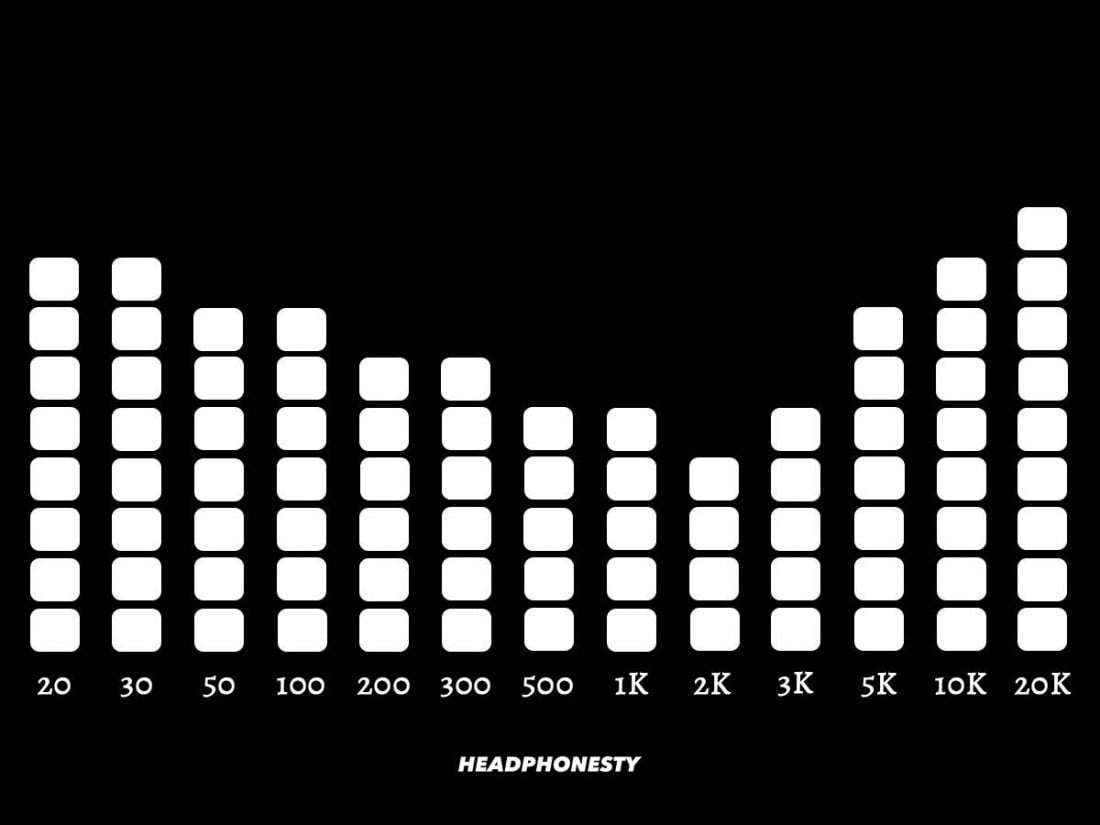
A V-shaped sound signature has enhanced low and high frequencies, with slightly decreased mids. More emphasis is given to the highs and lows in reducing the mid-range frequencies, making it more pleasing to hear. As a result, you get a strong bass with sparkling highs, perfect for pop music and rock genres with soaring guitar notes. This is definitely one of the more popular sound signatures amongst the general public.
Best for: Most music listeners who like a nice, well-rounded sound.
Best genres: Rock, Pop, and some Bollywood.
Audio gear to check out: Audio Technica ANC900BT, Fostex TH-900mk2, KZ ZS10 Pro.
Dark
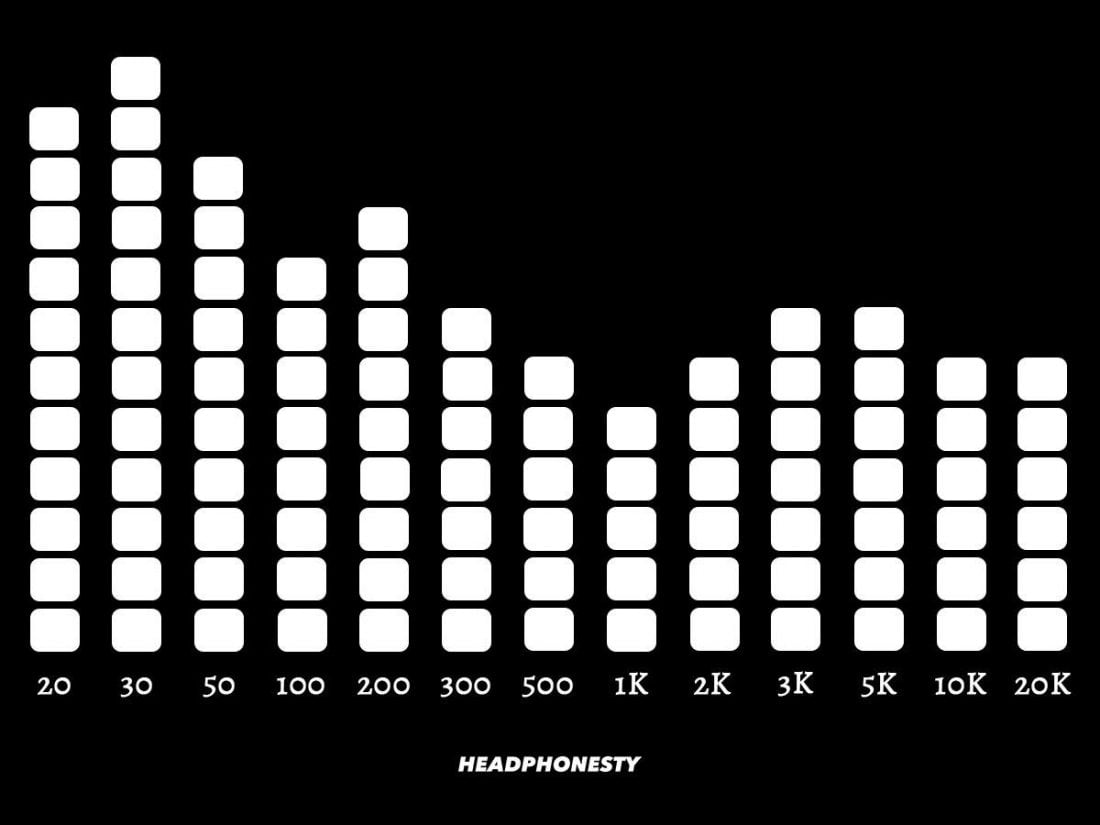
A Dark sound signature has heavily boosted low and lower-mid frequencies, making it sound richer and more immersive. The mids, upper-mids, and treble frequencies are also recessed, making the finer details sound more muted or veiled. Dark headphones are exceedingly warm and have a sort of “blended” sound quality to them. It’s definitely not for everyone, as some listeners tend to find a Dark sound profile a bit too extreme.
Best for: Those who enjoy a significantly deeper and warmer sound, with less piercing detail.
Best genres: Jazz, Blues, R&B, HipHop.
Audio gear to check out: Sennheiser HD 650, Audeze LCD-X, Beats Powerbeats 4 Wireless.
Analytical
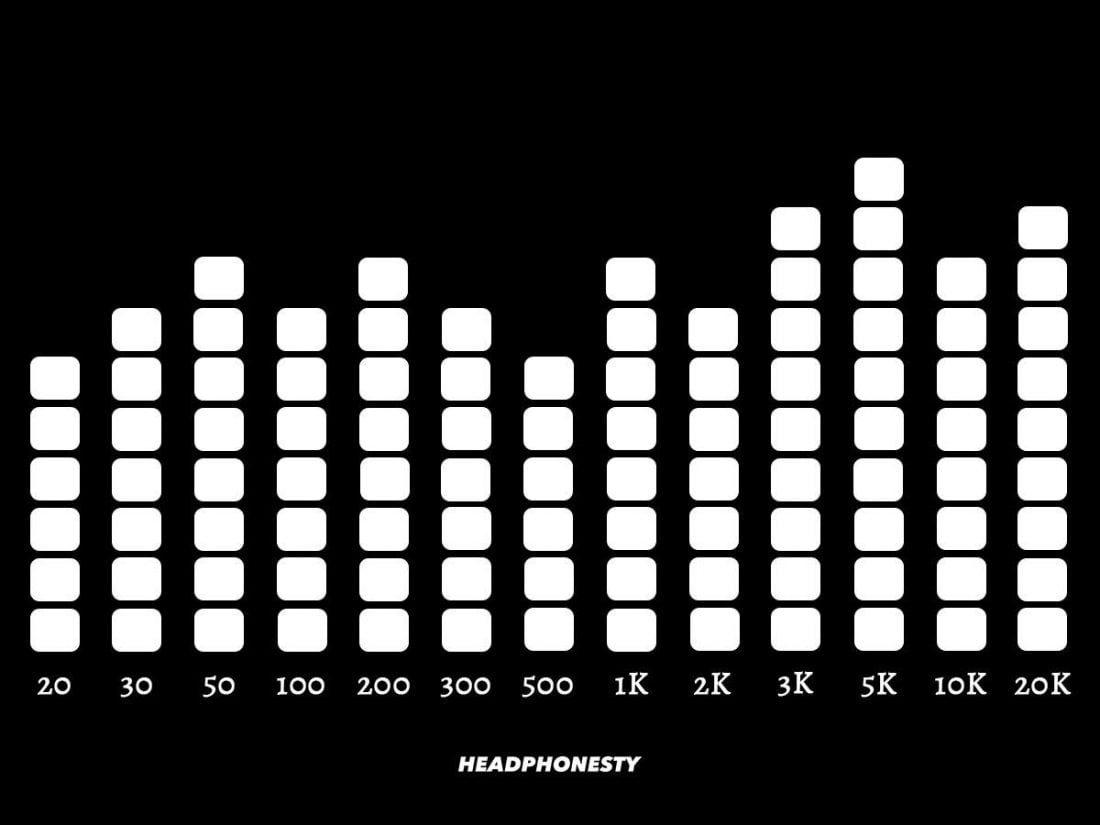
Often referred to as “clinical,” an Analytical sound signature is a mix between a Flat and Bright sound profile. It has relatively equal lows and mids, with slightly increased highs. This allows more detail and clarity to come through in the higher frequencies.
Headphones with beryllium drivers and silver conductors tend to have an Analytical sound profile. Some listeners, however, steer clear of these types of headphones because they reveal all the minute flaws and imperfections in a recording. So, while Analytical headphones can make great recordings sound even better, they can also make badly-recorded tracks sound worse.
Best for: Music professionals, sound engineers, audiophiles, and anyone who enjoys analyzing music.
Best genres: Classical, Rock, Jazz, Folk.
Audio gear to check out: Sennheiser HD 560S, Beyerdynamic DT 1990, QDC Anole VX-S.
Warm & Smooth
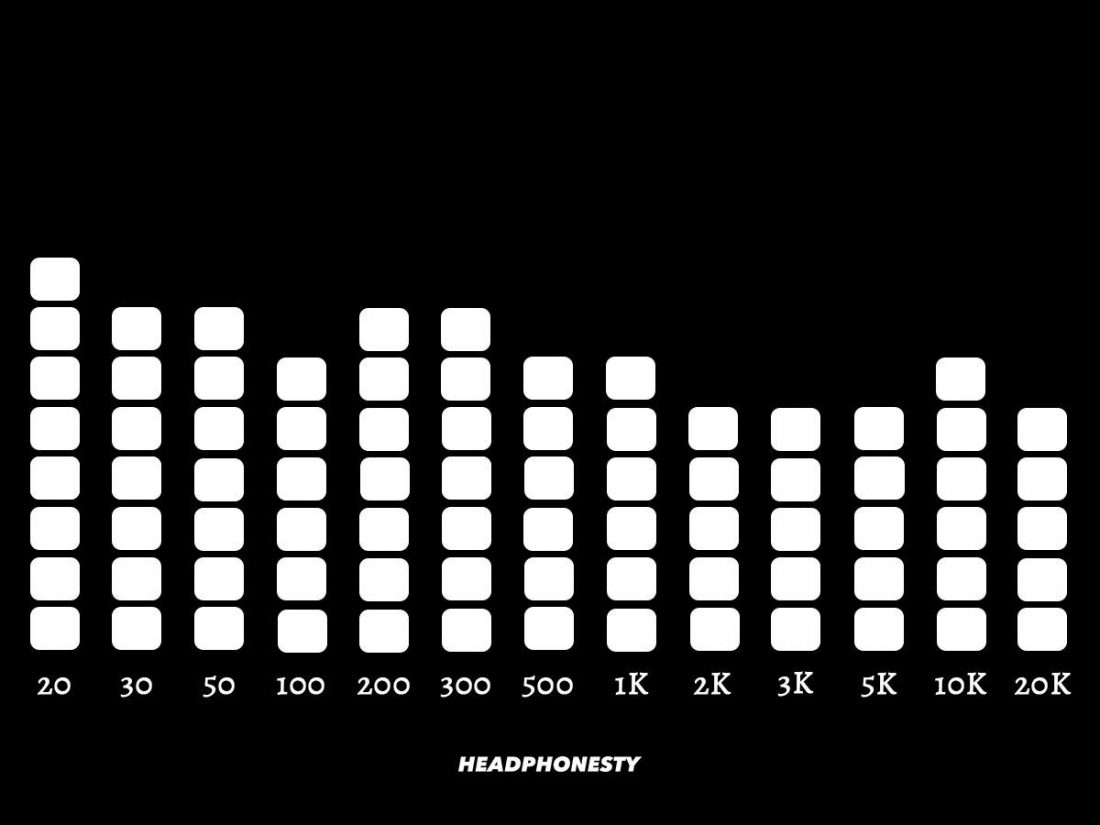
A Warm & Smooth sound signature is a less heavy version of a Dark sound profile. It has slightly recessed highs and moderately enhanced mids and lows. Headphones with this type of sound signature typically use copper conductors, which give music a distinctly warm and soothing quality. Vocals and instruments like the saxophone, cello, and piano sound particularly good with this sound profile. The reduced Highs also make it much more pleasant to listen to for longer periods.
Best for: Music listeners who prefer something more subdued and easy on the ears.
Best genres: Jazz, Blues, R&B, and some Rock genres.
Audio gear to check out: Ultrasone Edition 11, Meze Audio Empyrean, Jabra Elite 75t.
Can You Change the Sound Signature of Your Headphones?
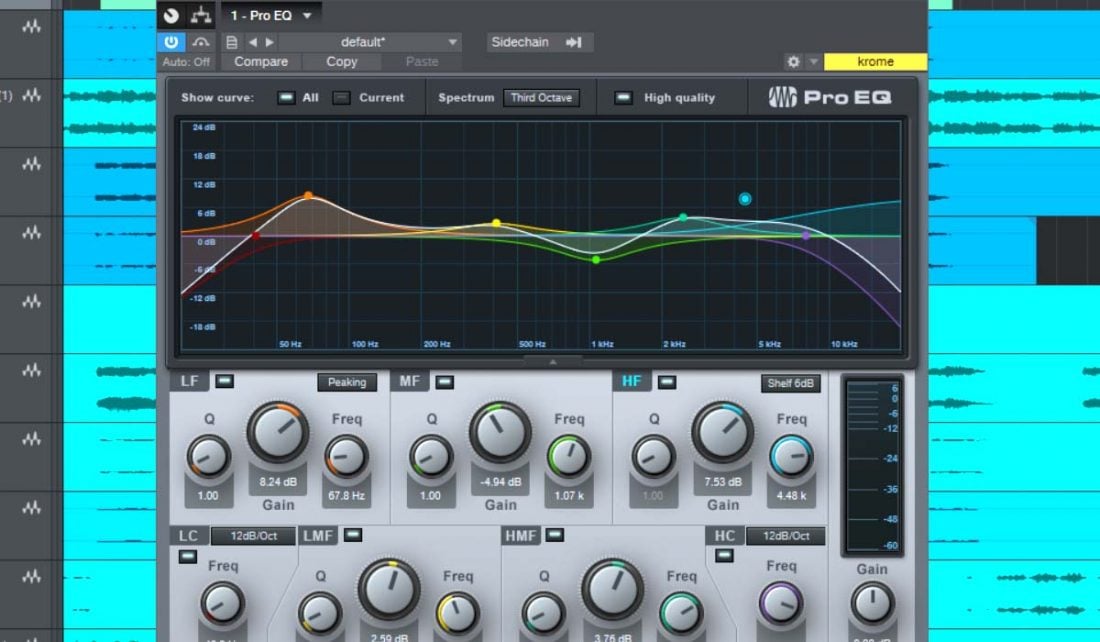
Technically, you could create a custom sound signature if you don’t like how your headphones sound.
Most people do this by simply accessing their computer’s sound settings and tweaking the frequency levels in the built-in equalizer. Others download equalizer apps like Neutralizer or Equalizer FX for their mobile phones to help them achieve the sound they want. Some even invest in hardware equalizers, like the Loki Mini+, to finetune their headphones or stereo speaker setups.
However, there are some downsides to messing around with your default frequency levels:
- Sound distortion: When boosting specific frequencies via an equalizer, you can introduce some distortion into your music. For example, if you want to boost vocals, you would typically increase the mid-range frequencies. However, keep in mind that most of the other instruments are within this frequency too. That means you’ll be making them louder than needed, boosting any unwanted background noise in the process.
- Damage to headphone drivers: If more bass is what you’re after, punching up the lower frequencies in your equalizer might seem like an easy fix. The problem with that is if you’re already listening at high volumes, that extra bass boost will push the headphone drivers beyond what they’re capable of handling and potentially damage them.
To avoid these scenarios (and save yourself the heartache), you’re much better off starting with a pair of headphones that already sound the way you want them to.
Conclusion
Ultimately, understanding sound signatures is a good way to make more informed buying choices. However, it’s important to keep in mind that there is no perfect device that’ll give you that perfect sound profile.
It’s also good to remember that impressions can vary per individual, and what may sound “bad” to someone may sound good to you. On that note, ultimately, experience will be your best teacher when it comes to finding your most ideal sound. And that means a lot of experimentation and listening for yourself.
We hope our guide has been able to bring you a step closer in the right direction. If you have thoughts or questions, leave us a comment below. We’d love to hear from you.
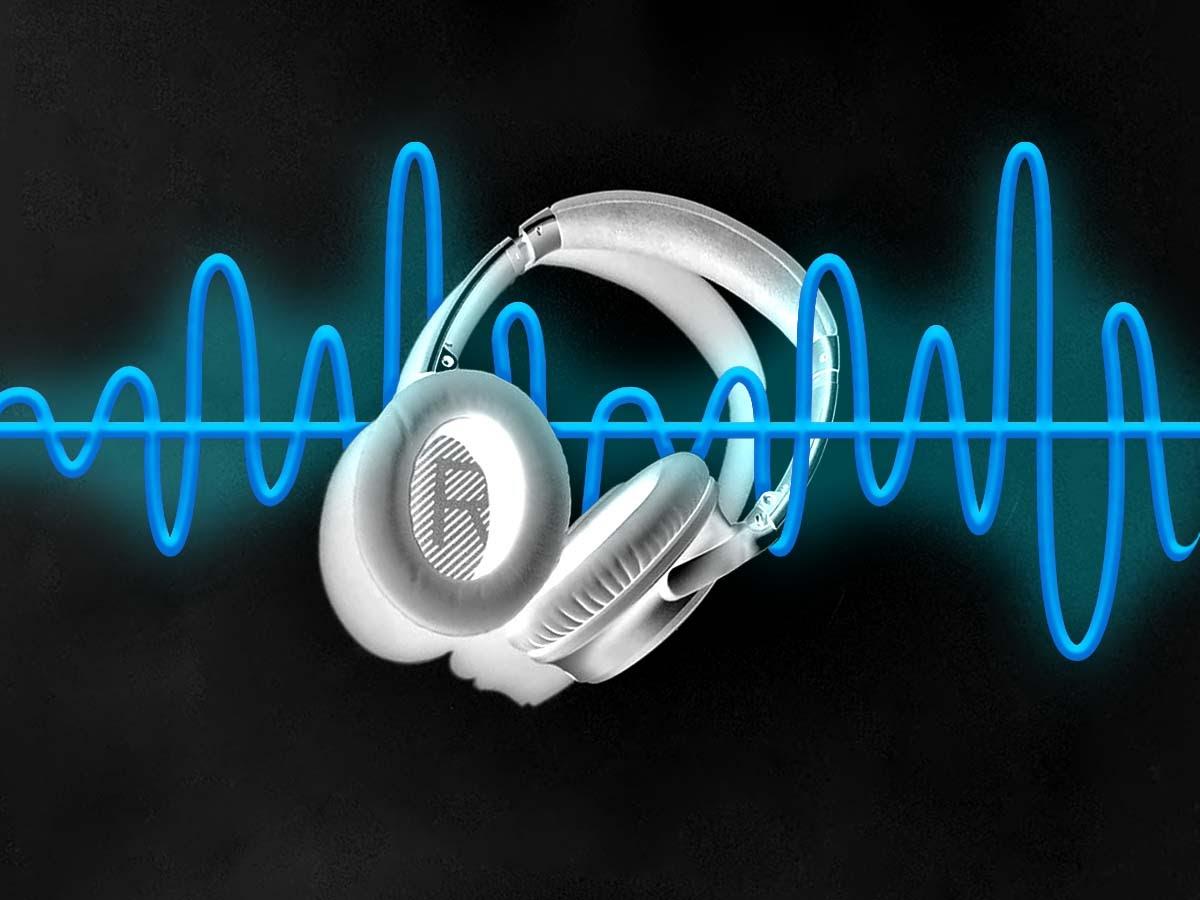
Thank you so very much for this most educational tutorial. It is certainly indeed a complicated matter when it comes down to selecting the right headphones.
Thanks, Miranda. Always glad to help.
Hello, am Peter and am a dj student. I just want know the best headphones for a Hip-hop dj